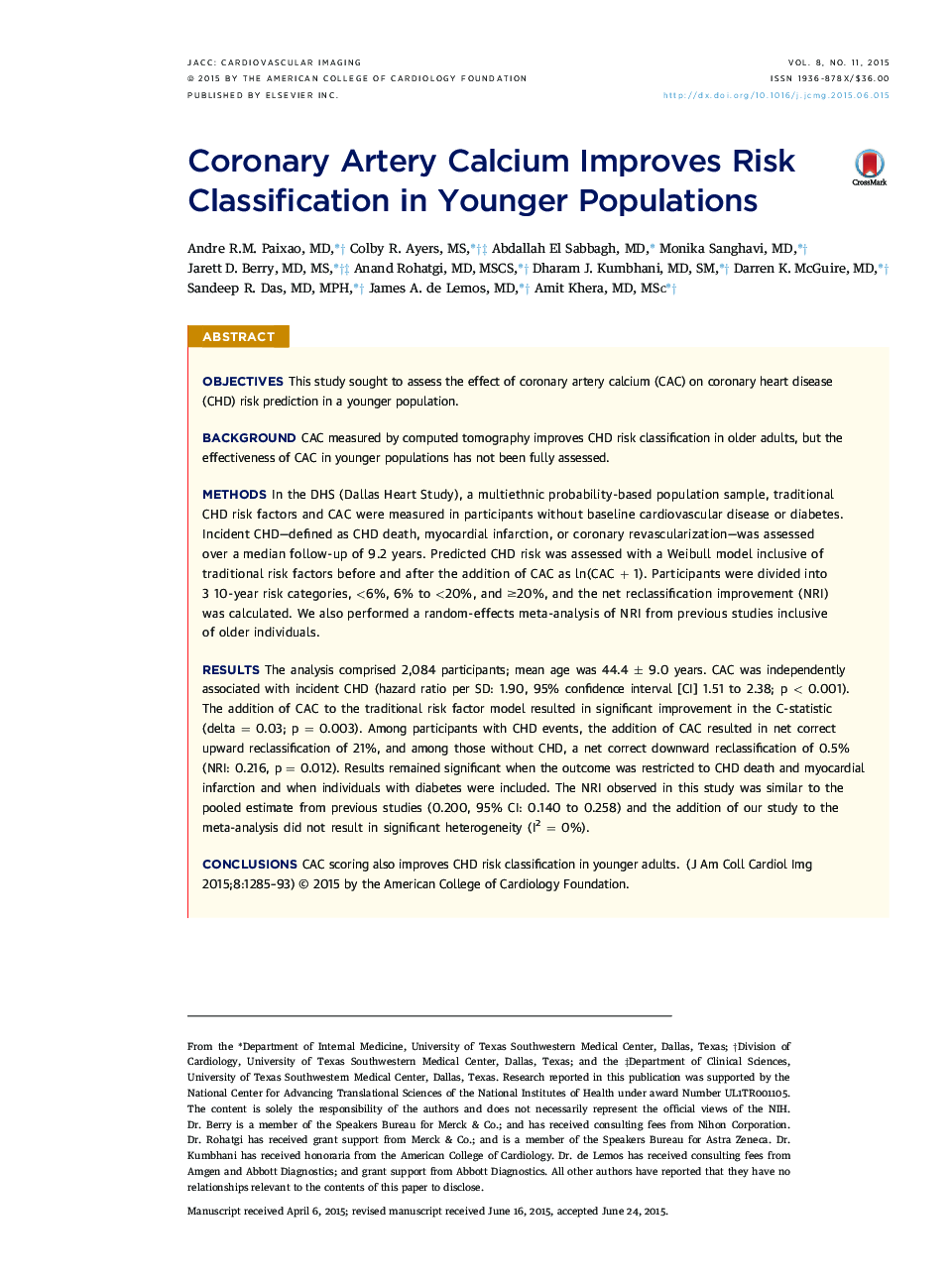| Article ID | Journal | Published Year | Pages | File Type |
|---|---|---|---|---|
| 5980044 | JACC: Cardiovascular Imaging | 2015 | 9 Pages |
ObjectivesThis study sought to assess the effect of coronary artery calcium (CAC) on coronary heart disease (CHD) risk prediction in a younger population.BackgroundCAC measured by computed tomography improves CHD risk classification in older adults, but the effectiveness of CAC in younger populations has not been fully assessed.MethodsIn the DHS (Dallas Heart Study), a multiethnic probability-based population sample, traditional CHD risk factors and CAC were measured in participants without baseline cardiovascular disease or diabetes. Incident CHD-defined as CHD death, myocardial infarction, or coronary revascularization-was assessed over a median follow-up of 9.2 years. Predicted CHD risk was assessed with a Weibull model inclusive of traditional risk factors before and after the addition of CAC as ln(CAC + 1). Participants were divided into 3 10-year risk categories, <6%, 6% to <20%, and â¥20%, and the net reclassification improvement (NRI) was calculated. We also performed a random-effects meta-analysis of NRI from previous studies inclusive of older individuals.ResultsThe analysis comprised 2,084 participants; mean age was 44.4 ± 9.0 years. CAC was independently associated with incident CHD (hazard ratio per SD: 1.90, 95% confidence interval [CI] 1.51 to 2.38; p < 0.001). The addition of CAC to the traditional risk factor model resulted in significant improvement in the C-statistic (delta = 0.03; p = 0.003). Among participants with CHD events, the addition of CAC resulted in net correct upward reclassification of 21%, and among those without CHD, a net correct downward reclassification of 0.5% (NRI: 0.216, p = 0.012). Results remained significant when the outcome was restricted to CHD death and myocardial infarction and when individuals with diabetes were included. The NRI observed in this study was similar to the pooled estimate from previous studies (0.200, 95% CI: 0.140 to 0.258) and the addition of our study to the meta-analysis did not result in significant heterogeneity (I2 = 0%).ConclusionsCAC scoring also improves CHD risk classification in younger adults.
